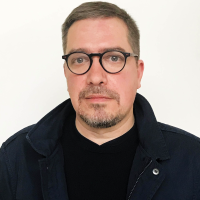
A blog of the Kennan Institute
Alexei Navalny’s memoir, Patriot, is a book that feels incomplete, its chapters prematurely curtailed by the very system he dedicated his life to opposing. Today the book inevitably reads like a stair-step journey toward death. The story’s end, which is known to the reader, casts its shadow over the narrative. For the author, this end was not a certainty but a dark possibility he fought tirelessly against.
For the reader, knowing the endgame adds a layer of the tantalizing, unfulfilled possibility that Navalny might have been part of a prisoner swap reportedly negotiated around the time of his death in a penal colony in Russia’s far north.
But that is now history. As events unfolded, Navalny’s journey evolved from traditional nonviolent resistance against a corrupt and increasingly oppressive government into an existential, faith-driven defiance in the face of death itself.
Navalny was a master of irony, understatement, and provocative engagement—qualities that turned him into a social media phenomenon on the Russian internet for two whole decades. That he was a great communicator on social media was evident from the very beginning. For this very reason, the Kremlin ignored him for years, regarding him as a blogger catering to a fringe audience. What was less apparent, including to his followers, was that he was a man rooted in faith—faith in civic ideals and basic Christian beliefs alike.
Layer Two: Believer in Higher Ideals
He often joked about how his colleagues did not take his religious beliefs seriously. “The fact that I am a religious person is the subject of constant ridicule in the Anti-Corruption Foundation [FBK in the Russian acronym, Navalny’s organization] and among those around me. Most of them are atheists, and I used to be one myself,” he said during one of his many “last words” in the politically motivated trials he was subjected to throughout his career.
The merging of the two sets of ideals—a pursuit of freedom and a deeply held faith—in one larger-than-life figure is not entirely unique in Russian history, but it remains a rarity in the country’s political landscape. This confluence might not seem unusual to an American, Indian, or Pole, who could easily recall figures like Martin Luther King Jr., Mahatma Gandhi, or Lech Wałęsa—a line of comparisons Navalny himself would dismiss with a hearty laugh.
In Russian history, however, finding a parallel requires looking further back. One might draw comparisons to lesser-known vanguardist revolutionaries from the early twentieth century, who combined futuristic political visions with a form of Christianity inspired by the ideas of Nikolai Fedorov. Alternatively, one could look to the mid-nineteenth-century Slavophiles—a loose group of nationalist romantics who embraced conservative civic ideas alongside a staunch commitment to Eastern Orthodoxy.
That said, neither of these circles were champions of civil rights and individual freedoms in the modern sense. Nor did they pursue clear and actionable political programs. The Slavophiles romanticized the communal ideals of a largely imagined peasant Russia, while the vanguardists were collectivists who prioritized utopian visions of the future over personal liberty. Both were rooted in their era’s authoritarian realities, making Navalny’s combination of faith and a commitment to democratic principles all the more extraordinary in Russia’s historical context.
Layer One: Down-to-Earth Politician
Navalny himself, with his characteristic humor, would probably remark that this is too much, that creating this sort of context for him takes itself too seriously. Yet my response would be that, without reaching for these lofty perspectives, one is left to focus solely on the practical realities of political struggles—struggles in which opposition figures initially held an advantage but gradually ceded ground to a Kremlin administration that learned quickly and adapted ruthlessly.
In the book, Navalny recounts how he came up with novel ways of political campaigning. His first political home in the early 2000s was the Yabloko party, founded in 1993 on the ideals that blended traditional European social democracy with elements of economic liberalism. At the time, Yabloko was the natural choice for much of the middle class and liberal intelligentsia. One of its founders, Grigory Yavlinsky, had been a young reformist voice in the early 1990s but, by the 2000s, had become a fixture of Moscow’s political establishment. He relied on traditional methods, such as behind-closed-doors deals with the Kremlin and curated appearances on Kremlin-controlled television.
Navalny, then in his late twenties, broke away from this model, pioneering grassroots campaigns and harnessing social media for voter mobilization on a scale previously unseen in Russian or even European politics. In the pre-Facebook and pre-Twitter era, LiveJournal was Russia’s most influential platform for political discourse, and Navalny quickly became one of its top accounts. Over the next years, Navalny replicated this success across emerging platforms such as Twitter, Facebook, and YouTube.
Navalny was soon expelled from Yabloko for participating in what was then known as “Russian marches,” annual gatherings of nationalists of various stripes, including outright scary ones. This part of his biography is what is normally cited as evidence of “Navalny’s nationalism.” His side of the story, repeated in the book, is that Yavlinsky’s politicking had relegated the party to an increasingly niche role, a trend Navalny sought to reverse. His participation in those gatherings—which he described as being mostly attended by European-style nationalists—was, in his view, an attempt to broaden the party’s appeal and break out of the narrow, Kremlin-approved confines in which Yavlinsky’s party agreed to operate.
Freed from the constraints of a Kremlin-controlled party system, Navalny went on to create a movement of his own. He continued to pioneer innovative campaigning techniques and nonviolent resistance strategies that, given a chance for fair game, would have almost certainly secured him a solid place among Russia’s political leaders. The Kremlin political managers tested this in 2013, when Navalny was allowed to run for Moscow mayor. His underdog campaign proved so successful that the election had to be rigged to ensure the Kremlin-backed incumbent held a “safe” lead.
Redeeming Failure
Arguably, from that point forward, the Kremlin administration doubled down on its more insidious strategies: co-opting institutions, manipulating public opinion, and weaponizing legal and extralegal measures—including political assassinations—to crush dissent. Opposition forces, with Navalny’s group standing out as the boldest, smartest, and the most innovative, remained committed to nonviolent means of resistance. They had little choice; crossing the line into violence would have invited accusations of extremism—charges that were eventually leveled against Navalny’s organization anyway, leading to its ban.
Were it not for Navalny’s faith layer—for his quoting the Sermon on the Mount, which he knew by heart, his attempts to observe Orthodox fasting even while incarcerated, his repeated affirmations of his religious beliefs—we would just have a story of a failed political movement unable to radically rethink its mission in the face of a brutal, violent opponent.
Navalny’s “Layer Two”—his deep faith and moral convictions—is what sets this story apart and redeems it, at least for me. Without this dimension, it would simply be the tale of a once-dominant movement refusing to adapt to the Kremlin’s evolution into a brutal machine bent on annihilating its opponents. With it, however, it becomes a story of belief in higher ideals—both civic and spiritual—that transcends politics and restores faith in the power of humanity to resist even in the face of war and overwhelming darkness, a role abandoned by Russia’s most other institutions.
Navalny, A. (2024). Patriot: A Memoir. Alfred A. Knopf.
The opinions expressed in this article are those solely of the author and do not reflect the views of the Kennan Institute.
Author

Editor-at-Large, Meduza

Kennan Institute
After more than 50 years as a vital part of the Wilson Center legacy, the Kennan Institute has become an independent think tank. You can find the current website for the Kennan Institute at kennaninstitute.org. Please look for future announcements about partnership activities between the Wilson Center and the Kennan Institute at Wilson Center Press Room. The Kennan Institute is the premier US center for advanced research on Eurasia and the oldest and largest regional program at the Woodrow Wilson International Center for Scholars. The Kennan Institute is committed to improving American understanding of Russia, Ukraine, Central Asia, the South Caucasus, and the surrounding region through research and exchange. Read more

Explore More in The Russia File
Browse The Russia File
Chechnya as a Model of Modern Russia

Russia’s Indigenous Communities and the War in Ukraine

Gas and Power in a Changing US–Russia Relationship

